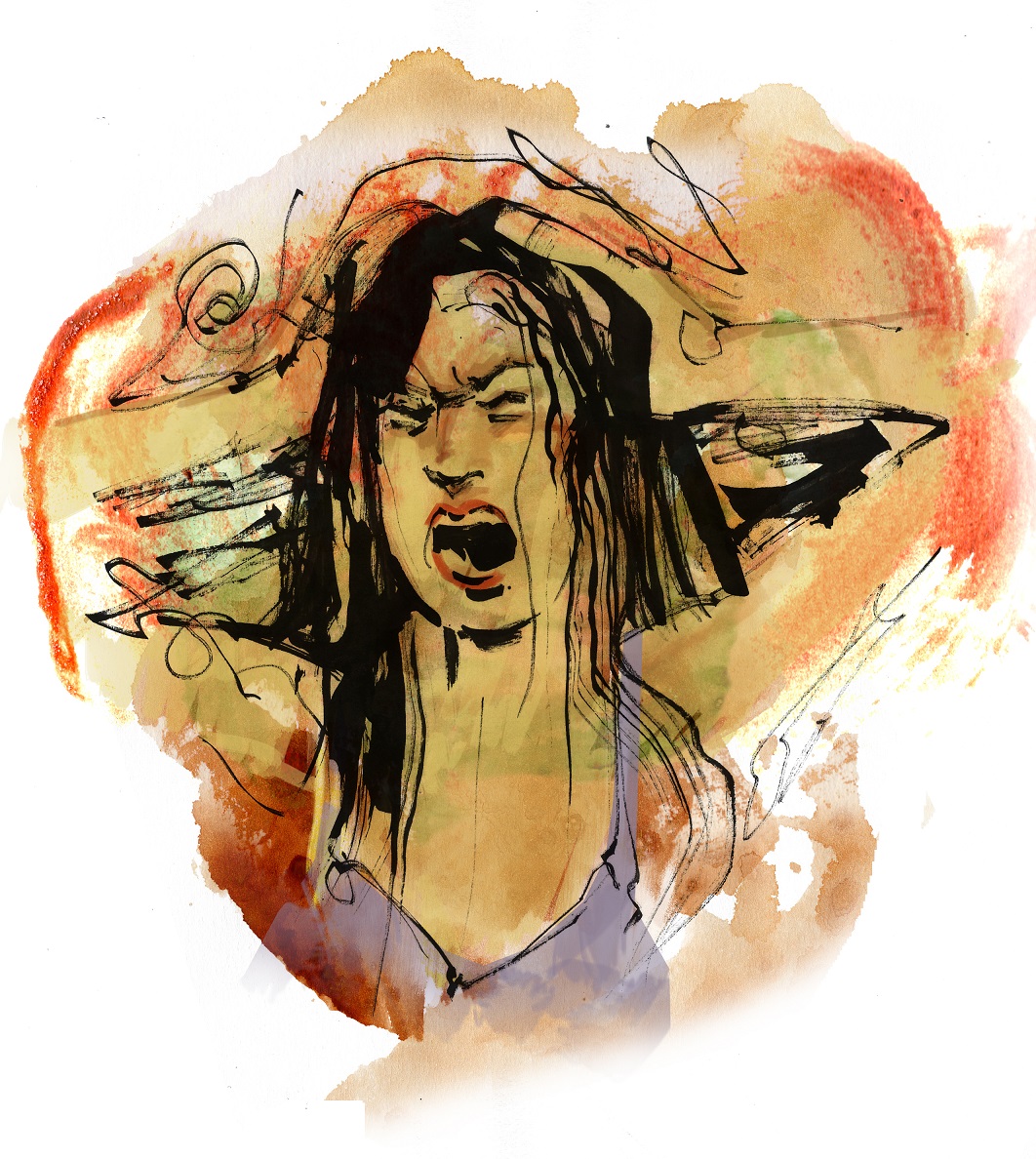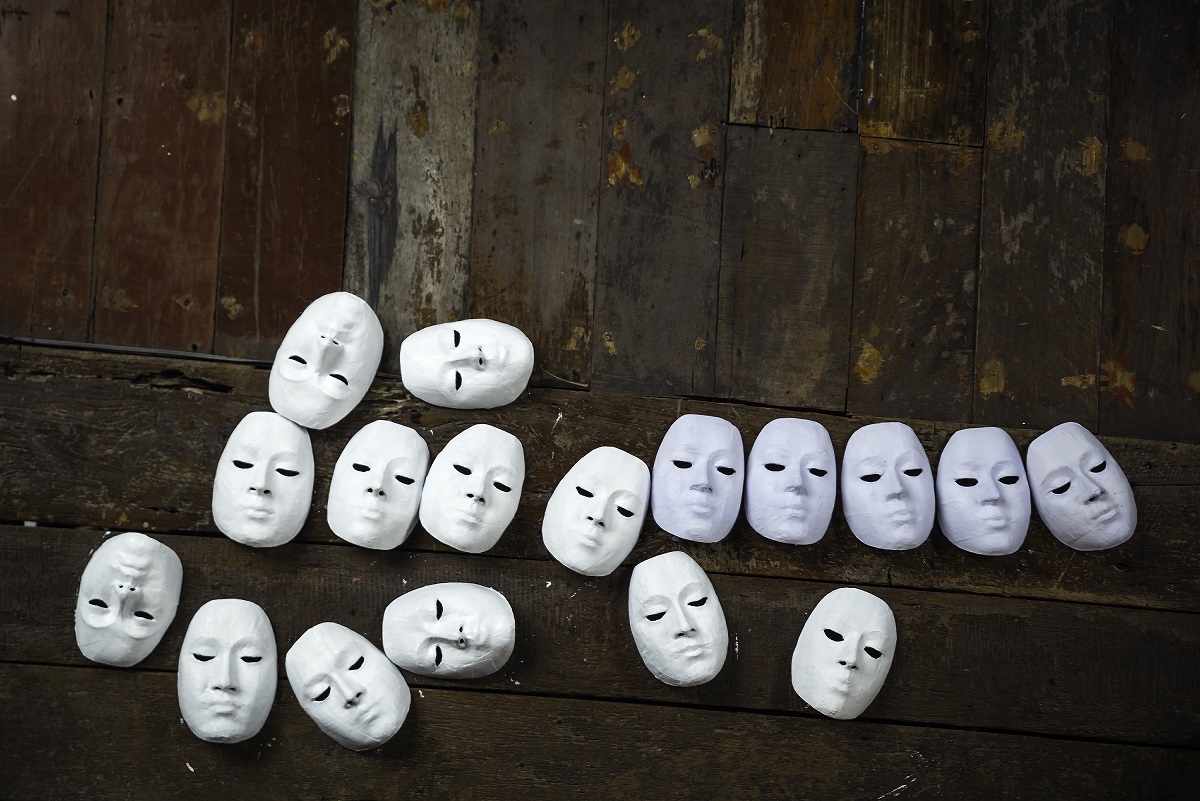
Title: The Inner World of Trauma: Archetypal Defenses of the Personal Spirit
Author: Donald Kalsched
Copyright: 1996
Genre: Analytical Psychology/Psychotherapy
Price: $40.91
ISBN: 978-0415123297
Rating: 5 out of 5
In the Inner World of Trauma: Archetypal Defenses of the Personal Spirit Jungian analyst Donald Kalsched progresses a psychoanalytically-informed perspective on dissociative phenomena incorporating the contributions of both Freud and Jung. In order to understand the inner workings of what he calls “the psyche’s archetypal self-care system”, one must have a rather comprehensive grasp of the psychology of the unconscious along with explicit knowledge of philosophical developments pioneered by its primary players. Hence I probably wouldn’t recommend this book to individuals with no grounding in depth psychology.
To understand Kalsched’s arguments we must regress to about the end of the eighteenth century, a time when Swiss psychiatrist Eugen Bleuler (1857-1939) was formally inducted as the director of the Burghölzli psychiatric hospital in Zurich, Switzerland. Under Bleuler there was an experimental confluence between the introspective mind-orientated perspectives on clinical diagnosis and treatment utilized by the French psychotherapists with biological-based methodologies favored by the Germans, a phenomenon which set the stage for an evolutionary leap in the understanding of mental illness. The fecundity of this cross-cultural humus facilitated the advent of Freudian psychoanalysis in its uncultivated, rudimentary form, a psychotherapeutic technique that abandoned conventional hypnotic inductions for psychiatric diagnosis and treatment and took up the mantle of “free association” (the transcription of a patient’s uncensored thoughts as they emerge into consciousness).
When the association experiments were first introduced at the Burghölzli by Emil Kraepelin (1856-1926) and Gustav Aschaffenburg (1866-1944) all emphasis was on the relationship between association and conscious performance. The principal anomalies exhumed by experimenters Wilhelm Wundt (1832-1920) and Aschaffenburg were that certain stimulus words habitually evoked a circle of adverse responses including the persistence of specific memories and ideas, passive insensitivity, protracted reaction times, and verbal blunders in the replication of words. It took the genius of Carl Jung (1875-1961) to correct misperceptions surrounding the exact nature of these ‘mistakes’. For Jung the latter were indicators of underlying emotional disturbances or what he called concealed, feeling-toned experiences. In other words they designated an underlying complex, or feeling-toned complex as he called them. These complexes were invaluable to a psychotherapist in that they corroborated a viable entry point for empirical investigations into psychopathological conditions. It occurred to Jung that by shedding light upon the underlying determinants of neuroses and psychoses in such a manner, a superior understanding of the latent dynamics of the unconscious psyche could be incurred.
From the very beginning Jung was convinced that the quintessential keystone in the organization of the unconscious psyche was affect. Indeed, if we can imagine the denomination mind as the quanta of psychic energy manifesting mental life we see that its integral parts–tangible sensations, analytical ideas, personal judgments and sentiments, autobiographical memories–are imbued with a particular ‘feeling-tone’. Where the feeling-tone and connected ideas of a personal experience breaches that threshold of reconcilability enabling an inner compromise with the authoritarian objectives and ambitions of the ego consciousness (also the seat of consciousness), all psychic and physical impressions congregated by the cognitive faculties at the time will constellate explicitly about an affect and form a feeling-toned complex.
Given their antithetical position and hostility towards the prevailing temperament, these secondary authorities have no choice but to split-off from the ego, sink into the protoplasmic soup of the personal unconscious, and assail an unassuming consciousness with very random introjections to the natural flow of associations. In some cases complexes initiate disturbances in memory retrieval and cognition and in others they announce their existence through abnormal body language, the compulsive repetition of thoughts and actions, and slips of the tongue or parapraxes. On occasion they’ll funnel into mythopoetic images like evil spirits, tricksters, and benevolent divinities, entering the dream landscape to reenact their antithetical affiliation to the ego in symbolic terms. In the case of traumatic experience such as bearing witness to and/or being the victim rape, murder, or a collective calamity of sorts the feeling-tone coloring associated cognitive elements becomes saturated to such an abnormal high degree that the psyche’s self-preservation instinct is activated. The instinct itself is an internal mechanism that decouples the effusive affect from its supplementary image-matrix and sweeps them worlds away from the ego’s sphere of operation so that they take on an alien quality and appear foreign. All mental content associated with such an event becomes either repressed or dissociated. Here, I should also declare that the degree to which the dissociation or repression of rogue, split-off contents occurs depends on the perceived intensity of the affect.
Accompanied by a certain withdrawal of psychic energy, the multiple splintering of the psyche into detached autonomous complexes containing different aspects of the traumatic affect renders authentic recollection and retraumatization impossible. Sadly, the uneven proportion of positive to negative consequences associated with these primary and secondary defenses makes them more of a liability than an asset. Operating from atypical and pathological premises split-off complexes can randomly project, oppress, mortify, threaten, possess, usurp, and hijack the conscious objectives of the destabilized ego, making them seem like invading discarnate spirits with motives, tendencies, and discernible powers of the own. When rampant in a constitutionally vulnerable personality they project into consciousness as those ‘voices’ and ‘images’ identified by clinicians as auditory and visual hallucinations and as hierarchies of ‘false selves’ indigenous to cases of Dissociative Identify Disorder (DID). Jung’s contention is supported by the fact that most ‘voices’ and ‘alters’ appear to be no more than a diabolical personification of a patient’s unconscious albeit honest self-image.
Kalsched gives an articulate and specific elucidation of these dissociative mechanisms at work within the psyche in The Inner World of Trauma: Archetypal Defenses of a Personal Spirit, weaving his way through a century’s worth of developments in depth psychology, clarifying some of the vaguer concepts, and even adding to them. He explains that in traumatic cases involving children the ego-complex isn’t adequately developed as to activate any psychic defense mechanisms; hence the sounding of the alarm is faithfully left to a secondary, primitive line of defenses allied to a transpersonal or higher Self. We also learn that during a protracted period of abnormally amplified traumatic affect, the formative ego will degenerate into a dyadic structure of embodied beings. One ‘splinter psyche’ or ‘false self’ regresses to the infantile stage of development and the other undergoes augmented metamorphosis into a parental figure attuned to the non-empathic environment. The complex emerges in dreams as an improbable coupling of benevolent or malevolent spirit with a meek, submissive child or animal-self whereas in more severe forms of dissociation they materialize as alterations between multiple nuclei of consciousness. Kalsched terms these psychic derivatives ‘the archetypal self-care system’ because they are generated by impersonal archetypal leitmotifs intrinsic to the deeper phylogenetic layer of the unconscious, the collective unconscious.
Later, we begin to see that there are obvious drawbacks to the configuration of survival personalities. Some of their more unjust crimes are the restriction of aptitude for personal choice, the blunting of creative efflux and inspiration from the higher unconscious, and the complete atrophy of psychospiritual evolution that eventuates after the fruition of the first two. The primitive defenses are static and fixed, frozen at the magical level of consciousness; they do not evolve with subsequent adaptations of personality to the ever-changing environment. As persistent relics from the traumatic past they pounce on contingencies remotely resembling those through which the original trauma was experienced, disallowing the meaningfulness of new experiences to operate constructively on the ego-complex. In actual fact we wouldn’t be wrong in likening the activation of primitive defenses to a double-edged blade; on one side they disallow the reintegration of cognitive awareness, affect, sensation, imagery, and all other elements of consciousness that would have otherwise led to conscious acknowledge of the primal wound, and on the other they conjure phantasmagoric sequelae distorting the authentic trauma through which some kind of ambiguous meaning is derived. Like a broken record that repeats the same segue over and over, the ‘archetypal self-care system’ continues to haunt the enfeebled ego by seeking out non-empathic milieus where the risk of retraumatization runs high. In hindsight the continuum of negative attributes illuminate the sobering reality of primitive, archaic defenses as diabolical, destabilizing, and self-sabotaging processes.
So in the end the association experiment initiated to vindicate the philosophical groundwork of Freudian psychanalysis ended up as the principal apparatus for perusing inner unconscious processes which had until that point in time been resistant to empirical investigation. At first, there was consensual agreement between Freud and Jung regarding many aspects of trauma. For one they both agreed to a causal relationship between underlying emotional disturbances isolated by the association experiments and psychopathology; that behind the disturbances lay abnormal feeling-tone colorations negating the will of the conscious center of the personality; and last but not least, acknowledgement as to the key role of traumatic aftereffects in expediting the evolution of neurosis and in more extreme cases psychosis. Each psychotherapist compartmentalized this phenomenon slightly differently–as an exponent of the scientific school of materialistic monism, Freud called the echoing aftereffects obsessive and compulsive fixations while Jung, being much more holistic and comprehensive in his views, opted for affect and feeling-toned autonomous complexes. Kalsched also draws attention to lesser known aspects of what obviously began as an intellectual syzygy: both agreed that the creation of subsequent fantasies was the agency responsible for retraumatization, and both ascertained that the coupling of external contingencies with internal psychological mechanisms infused affect with the critical mass to force ‘splitting’.
Despite the obvious camaraderie, the subsequent and necessary step of identifying the exact nature of the fantasy content became the sole reason for the two thinkers to lock horns. Freud could not extricate himself from his sexual theories, the Oedipal and Electra complexes, and insisted that the renunciation of incestuous sexual wishes were at the root of traumatic anxiety. Jung, on the other hand, believed that multiple ego-states could emerge from feeling-toned complexes that were themselves constellated according to the laws of archetypal leitmotifs in the collective unconscious. From this take complexes could be personal (confined to personal unconscious) or impersonal (projecting from the collective unconscious), and either inferior, superiority, guilt, power, parental, or sexual based. Of course, Sigmund Freud (1856-1939) would have none of that; he judged Jung’s system to be too metaphysical, too magical, and too entrenched in ‘the black tide of mud of occultism’ for it to be scientifically feasible. But Jung saw in the latter an eternal, unshakable wisdom that needed to be rediscovered, clothed in contemporary psychoanalytic garments, and bequeathed to society. In Jung’s eyes Freud was far too one-dimensional and reductionist, and I’m inclined to agree!
On a slightly personal note I would have to say that any philosopher or scientist who honors the diversity of psychic experience by remaining true to the likelihood of etiological multiplicities would accept the Jungian standpoint and critically scrutinize the Freudian one. Kalsched agrees with this assessment, adding that Jung’s model is compatible with current research findings in psychopathology. He also puts forth a likely hypothesis that seems to have eluded both the founding father of psychoanalysis and the founding father of analytical psychology; all cases of pathological ‘splitting’, he asserts, are caused by an aggressive attack of one psychic authority on another (i.e. the autonomous complex on the ego-complex). When the aggression is absent, the archetypal defenses remain dormant.
The book itself is divided into two sections with six chapters in one and four in the other. Chapter One, ‘The Inner World of Trauma in its Diabolical Form’, and Chapter Two, ‘Further Clinical Illustrations of this Self-Care System’ of Part One are dedicated to the presentation of clinical examples of the archetypal self-care system at work in the dreams and fantasies of trauma patients. Following in Chapter Three, ‘Freud and Jung’s Dialogue about Trauma’s Inner World’, is a brief historical summa of the concept of dissociation as it unfolded in psychoanalytical dialogue between Sigmund Freud and Jung. The natural flow of the argument sweeps the reader into Jung’s phenomenological perspectives on the daimonic parent figure and its role as protector, guide, and imprisoner of the wounded child-ego, and then we move to a sweep of contributions made by other Jungian analysts to the literature on the dyadic self-care system. Jungian hermeneutic comes to the forefront in Part Two of the work with the amplification of classic mythological material in light of archetypal defenses. Kalsched examines some very popular ones like Rapunzel, Eros and Psyche, Fitcher’s Bird, and Prince Lindworm.
As a final point I will admit that this is an avant-garde work of the highest quality; definitely one of the best books I’ve read on the topic of trauma and dissociation! Five stars!









